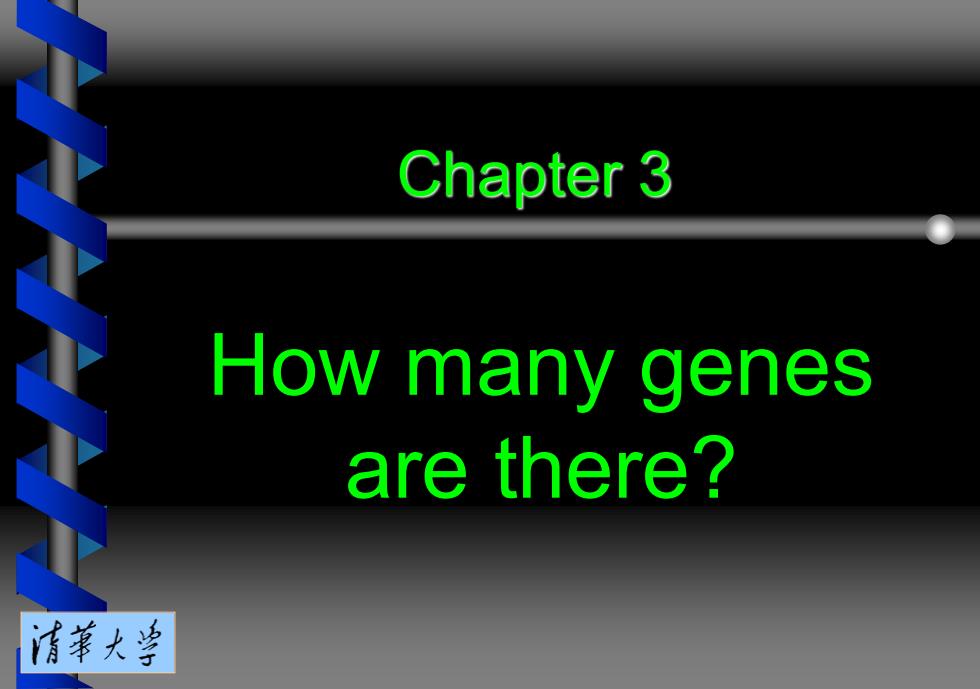
Chapter 3 How many genes are there? 清苇大当
Chapter 3 How many genes are there?
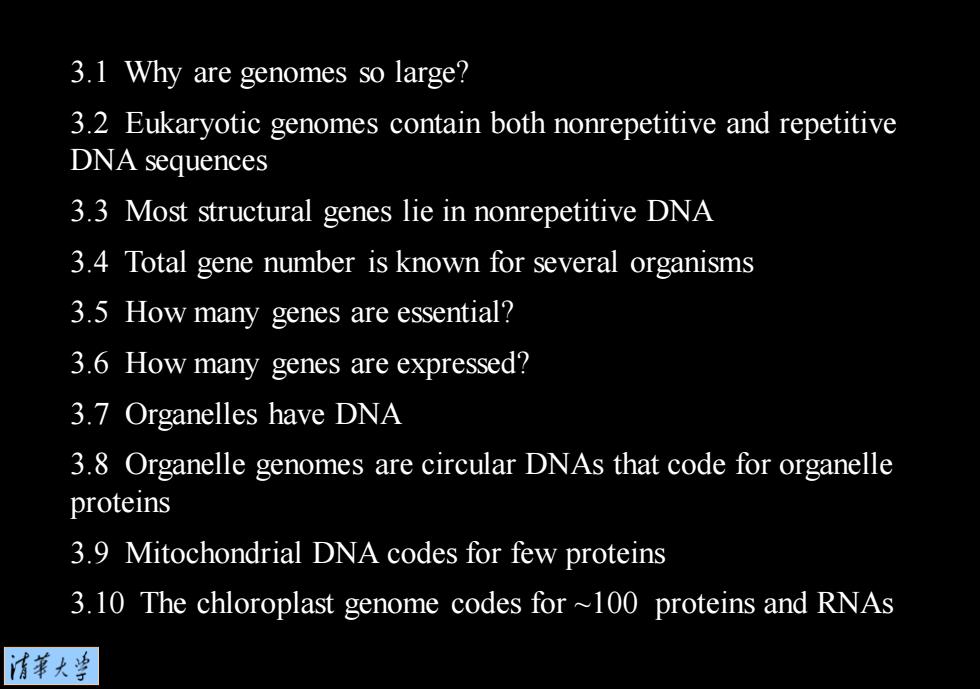
3.1 Why are genomes so large? 3.2 Eukaryotic genomes contain both nonrepetitive and repetitive DNA sequences 3.3 Most structural genes lie in nonrepetitive DNA 3.4 Total gene number is known for several organisms 3.5 How many genes are essential? 3.6 How many genes are expressed? 3.7 Organelles have DNA 3.8 Organelle genomes are circular DNAs that code for organelle proteins 3.9 Mitochondrial DNA codes for few proteins 3.10 The chloroplast genome codes for ~100 proteins and RNAs 清菜大当
3.1 Why are genomes so large? 3.2 Eukaryotic genomes contain both nonrepetitive and repetitive DNA sequences 3.3 Most structural genes lie in nonrepetitive DNA 3.4 Total gene number is known for several organisms 3.5 How many genes are essential? 3.6 How many genes are expressed? 3.7 Organelles have DNA 3.8 Organelle genomes are circular DNAs that code for organelle proteins 3.9 Mitochondrial DNA codes for few proteins 3.10 The chloroplast genome codes for ~100 proteins and RNAs
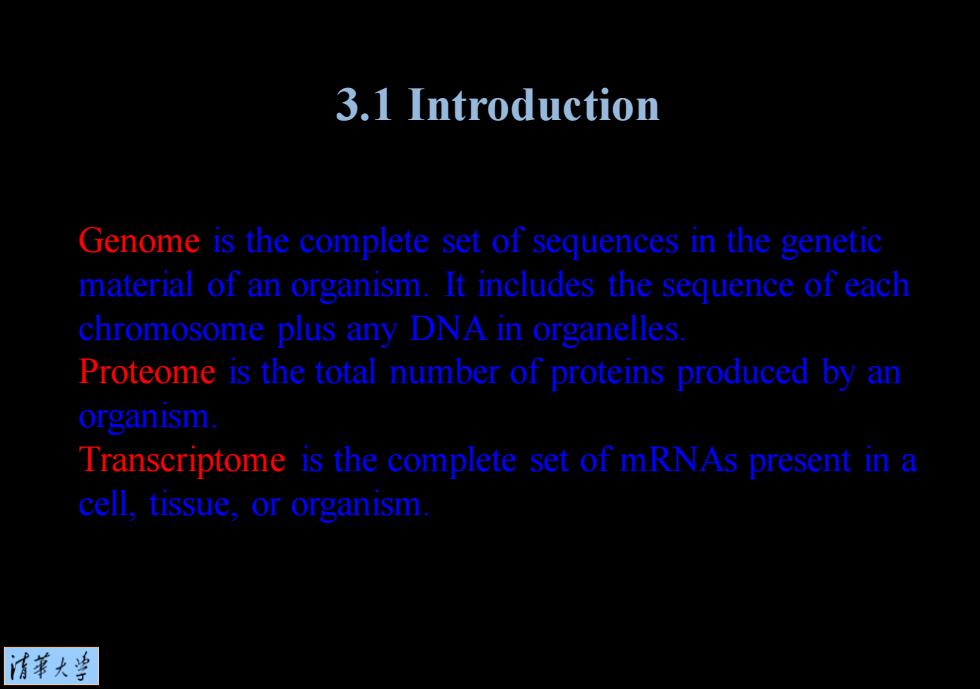
3.1 Introduction Genome is the complete set of sequences in the genetic material of an organism.It includes the sequence of each chromosome plus any DNA in organelles. Proteome is the total number of proteins produced I by an organism Transcriptome is the complete set of mRNAs present in a cell,tissue,or organism 清菜大当
Genome is the complete set of sequences in the genetic material of an organism. It includes the sequence of each chromosome plus any DNA in organelles. Proteome is the total number of proteins produced by an organism. Transcriptome is the complete set of mRNAs present in a cell, tissue, or organism. 3.1 Introduction
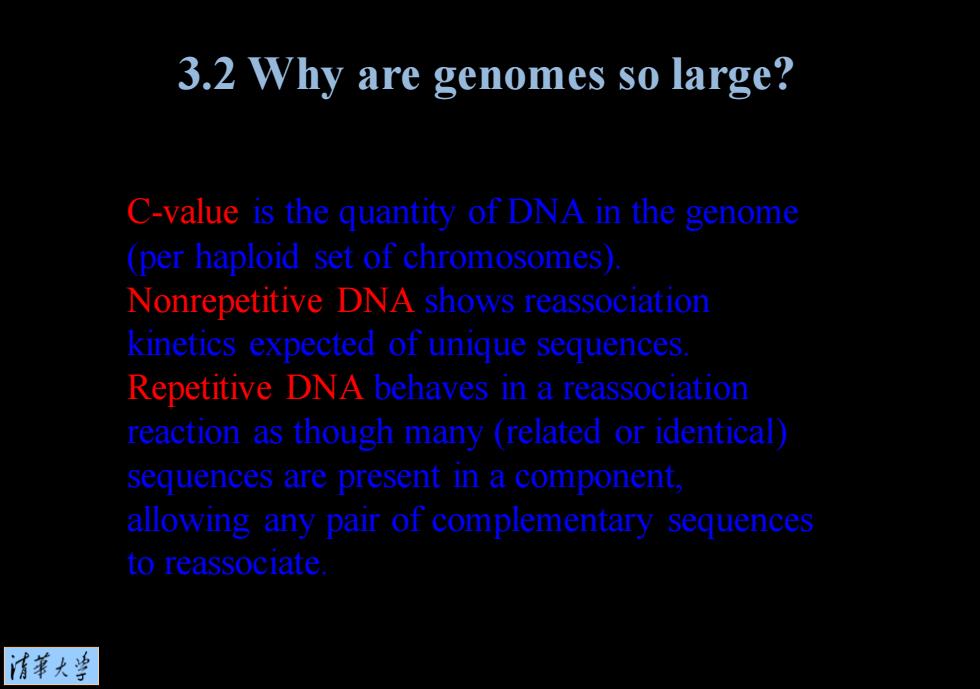
3.2 Why are genomes so large? C-value is the quantity of DNA in the genome (per haploid set of chromosomes) Nonrepetitive DNA shows reassociation kinetics expected of unique sequences Repetitive DNA behaves in a reassociation reaction as though many (related or identical) sequences are present in a component, allowing any pair of complementary sequences to reassociate 清苇大当
C-value is the quantity of DNA in the genome (per haploid set of chromosomes). Nonrepetitive DNA shows reassociation kinetics expected of unique sequences. Repetitive DNA behaves in a reassociation reaction as though many (related or identical) sequences are present in a component, allowing any pair of complementary sequences to reassociate. 3.2 Why are genomes so large?
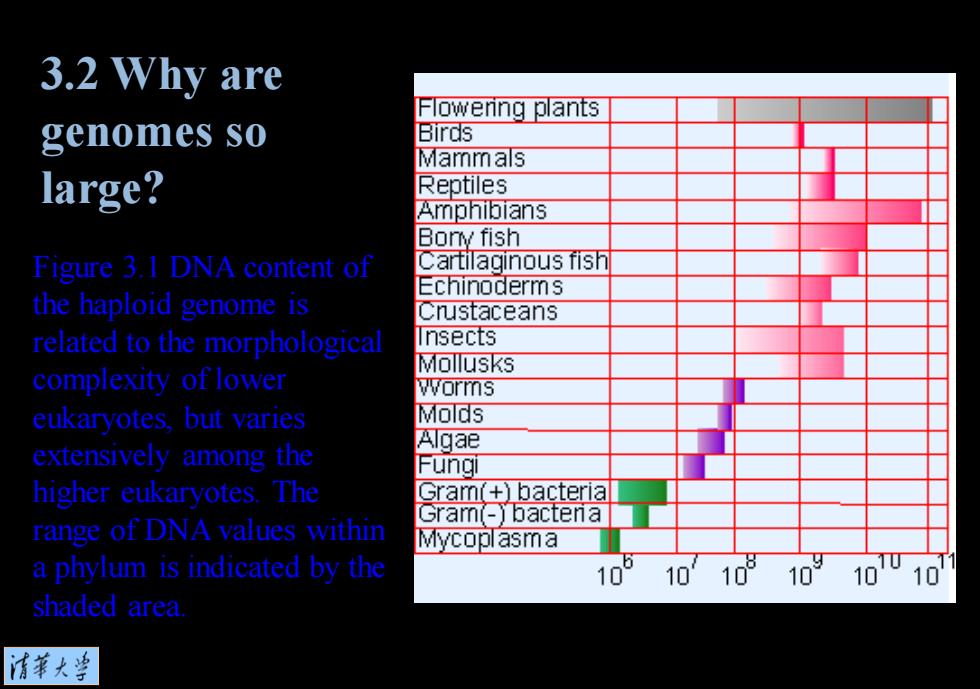
3.2 Why a are Flowering plants genomes so Birds Mammals large? Reptiles Amphibians Bory fish Figure 3.I DNA content of Cartilaginous fisl万 Echinoderms the haploid genome is Crustaceans related to the morphological Insects Mollusks complexity of lower worms eukaryotes.but varies Molds extensively among the Algae Fungi higher eukaryotes.The Gram(+)bacteria Gram(-)bactera range of DNA values within Mycoplasma a phylum is indicated by the 101010310310U10 shaded area 情菜大当
Figure 3.1 DNA content of the haploid genome is related to the morphological complexity of lower eukaryotes, but varies extensively among the higher eukaryotes. The range of DNA values within a phylum is indicated by the shaded area. 3.2 Why are genomes so large?